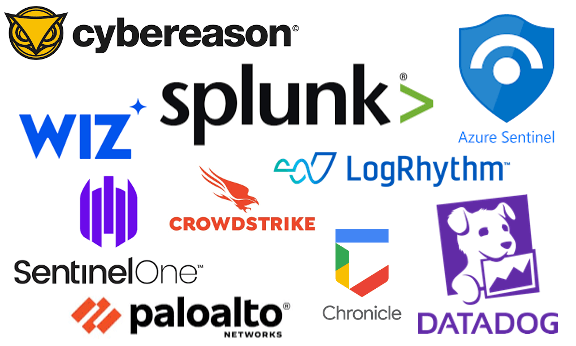Using deception to augment your existing tools
Don’t (just) think of deception as a standalone strategy. Think of it as a way of getting better results from your existing security investments
Deception technology is not just another security solution; it’s your security force multiplier. Unlike traditional cybersecurity approaches that react to threats, deception takes a bold step forward by proactively engaging attackers. It lures them into a meticulously designed maze of deception, where every step they take is meticulously tracked, and every move they make is anticipated.
But why is deception so powerful?
It’s an Early Warning System: Deception acts as an early warning system, alerting you to intrusions long before they reach critical assets. It provides an invaluable window of opportunity to thwart attackers’ advances.
It creates Real-time Engagement: Instead of reacting passively, deception actively engages attackers in a high-stakes game. It’s a cat-and-mouse chase where defenders control the board, strategically analyzing attacker movements.
It provides Minimal False Positives: Deception technology significantly reduces false positives. When an alert triggers within a deceptive environment, you can be confident that it’s a true positive, worthy of your attention.
Within this post, we invite you to explore how Deception Technology augments and elevates the outcomes of key security tool categories. Whether you’re an end-user organisation seeking to fortify your defences or a visionary vendor aiming to revolutionise your products, the world of Deception Technology offers win-win moments in cybersecurity. It’s not just about staying secure; it’s about staying ahead.
Let’s break down the product categories that could benefit from an infusion of deception tactics:

Cloud-Native Application Protection Platforms (CNAPP)
Deception technology can be deployed within cloud environments to mimic cloud resources, effectively identifying and analyzing attacks targeting cloud-native applications.
By creating decoy containers, serverless functions, and storage services, CNAPP solutions can detect abnormal activities and patterns indicative of attacks, thus strengthening cloud application security.
Cloud Security Posture Management (CSPM)
Deception technology can enhance CSPM by creating deceptive cloud configurations and resources. This approach can expose misconfigurations and vulnerabilities that could be exploited by attackers. It also aids in the early detection of attacks targeting cloud resources, allowing CSPM tools to respond more effectively to compliance and security posture violations.
Data Loss Prevention (DLP)
Deception technology can be used to create fake sensitive data. When attackers access or exfiltrate this data, it triggers alerts, allowing for quick response to potential data breaches.
Endpoint Detection And Response (EDR)
Deception technology can be used to plant deceptive credentials, files, and configurations on endpoints. This approach can trick attackers into revealing their presence when they attempt to use these fake resources. As a result, EDR solutions can respond more effectively to real threats.
Incident Response (IR)
The integration of deception technology aids IR teams by providing early detection of breaches. The high accuracy of deception-based alerts ensures that the teams can prioritize their response efforts more effectively, focusing on genuine and potentially damaging activities.
Network Security Monitoring (NSM)
Deception can play a pivotal role in network security by deploying decoy servers, services, and even fake network segments. This not only misleads attackers but also aids in identifying lateral movement within the network, a crucial aspect often missed by traditional security measures.
Security Information and Event Management (SIEM) Systems
Deception technology enriches the data fed into SIEM systems. When attackers interact with decoys, this generates high-fidelity alerts with low false positive rates. This more accurate data helps in fine-tuning correlation rules and improving the overall efficiency of the SIEM system.
Security Orchestration, Automation, and Response (SOAR)
Integrating deception technology with SOAR enables automated responses based on the intelligence gathered from deception environments. For instance, upon detection of an interaction with a decoy, automated workflows can be initiated for further investigation or mitigation. This integration can also help in enriching the decision-making process of SOAR platforms, providing them with high-fidelity alerts and detailed attack information.
Threat Intelligence (TI)
Deception tools gather unique intelligence about attackers’ tactics, techniques, and procedures (TTPs). This information is invaluable for threat intelligence platforms, helping to refine threat indicators and providing a deeper understanding of emerging threats.
User and Entity Behaviour Analytics (UEBA)
By integrating deception technology, UEBA systems can better identify anomalies in user behaviour. Decoys can be used to trap malicious insiders or compromised user accounts. This integration aids in creating baselines of normal behavior more accurately, as interactions with decoys are clear indicators of deviations, thereby improving the anomaly detection capabilities of UEBA solutions.
Extended Detection and Response (XDR)
Deception technology complements XDR by extending its detection capabilities beyond traditional data sources. It creates a diversified set of traps and lures that can detect sophisticated attacks across endpoints, networks, and cloud environments. The intelligence gathered from interactions with deceptive elements can be fed into XDR systems, enhancing their analytical capabilities and enabling more accurate and comprehensive threat detection and response.
In each of these categories, deception technology acts as a force multiplier. It not only confuses and delays attackers but also provides invaluable insights into their tactics and techniques. This intelligence is crucial for refining and strengthening cybersecurity measures across various platforms. Seedata.io has capabilities on all areas discussed above, and we’d love to show you how it is to get started
Sign up for your free account
All features enabled, no credit card needed.
